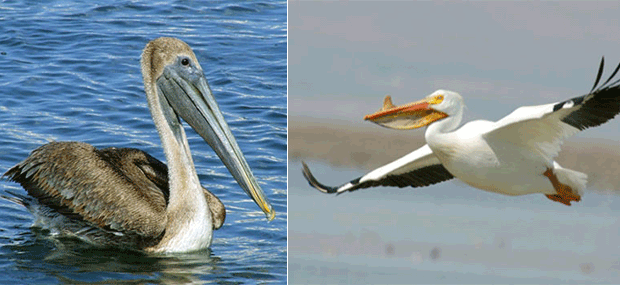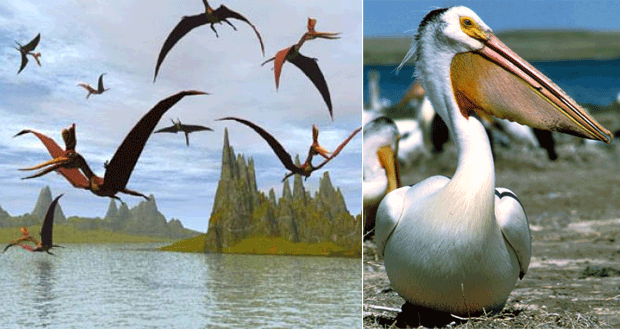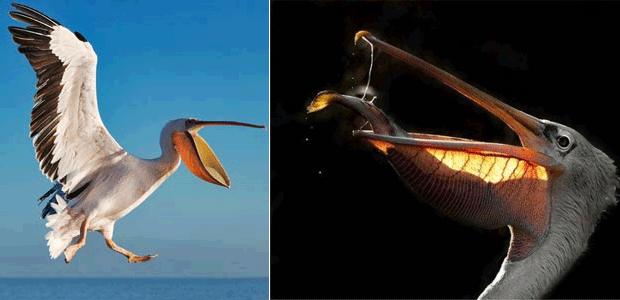|
Pelicans are a group of large water birds in the
clade Pelecanidae. They are characterised by a long beak and large
throat pouch used in catching, and draining water from, their prey.
The eight living pelican species have a sometimes patchy global
distribution, ranging latitudinally from the tropics to the temperate
zone, though they are absent from much of interior and southern South
America as well as from polar regions and the open ocean.
|
|
 |
|
Fossil evidence of pelicans dates back at least 30 million years, from
the remains of a beak very similar to modern species recovered from
Oligocene strata in France.
Long thought to be related to frigatebirds, cormorants, gannets and
boobies, and tropicbirds, pelicans are now known instead to be most
closely related to the Shoebill and Hammerkop, and are placed in the
order Pelecaniformes.
Ibises, spoonbills and herons are more distant relatives and members of
the same order. Pelicans frequent inland and coastal waters where they
feed principally on fish. Gregarious birds, they breed colonially and
often hunt cooperatively.
|
|

|
|
They have a long history of cultural significance in mythology, and in
Christian and heraldic iconography.
The genus Pelecanus was first formally described by Linnaeus in 1758, in
the tenth edition of his Systema Naturae. He described the
distinguishing characteristics as a straight bill hooked at the tip,
linear nostrils, a bare face, and fully webbed feet.
This early definition included frigatebirds, cormorants and sulids as
well as the pelicans. The name comes from the Ancient Greek word πελεκάν
pelekan, which is itself derived from the word πελεκυς pelekys meaning
"axe". In classical times, the word was applied to both the pelican and
the woodpecker.
|
|

|
|
Pelicans give their name to the Pelecaniformes, an order which has had a
varied taxonomic history. Tropicbirds, darters, cormorants, gannets,
boobies and frigatebirds, all traditional members of the order, have
since been reclassified: tropicbirds into their own order,
Phaethontiformes, and the remainder into Suliformes.
In their place, herons, ibises, spoonbills, the Hamerkop and the
Shoebill have now been moved into Pelecaniformes. Molecular evidence
suggests that the Shoebill and the Hamerkop form a sister group to the
pelicans, though there is some doubt as to the exact relationship
between the three lineages. |
|
|
|
|